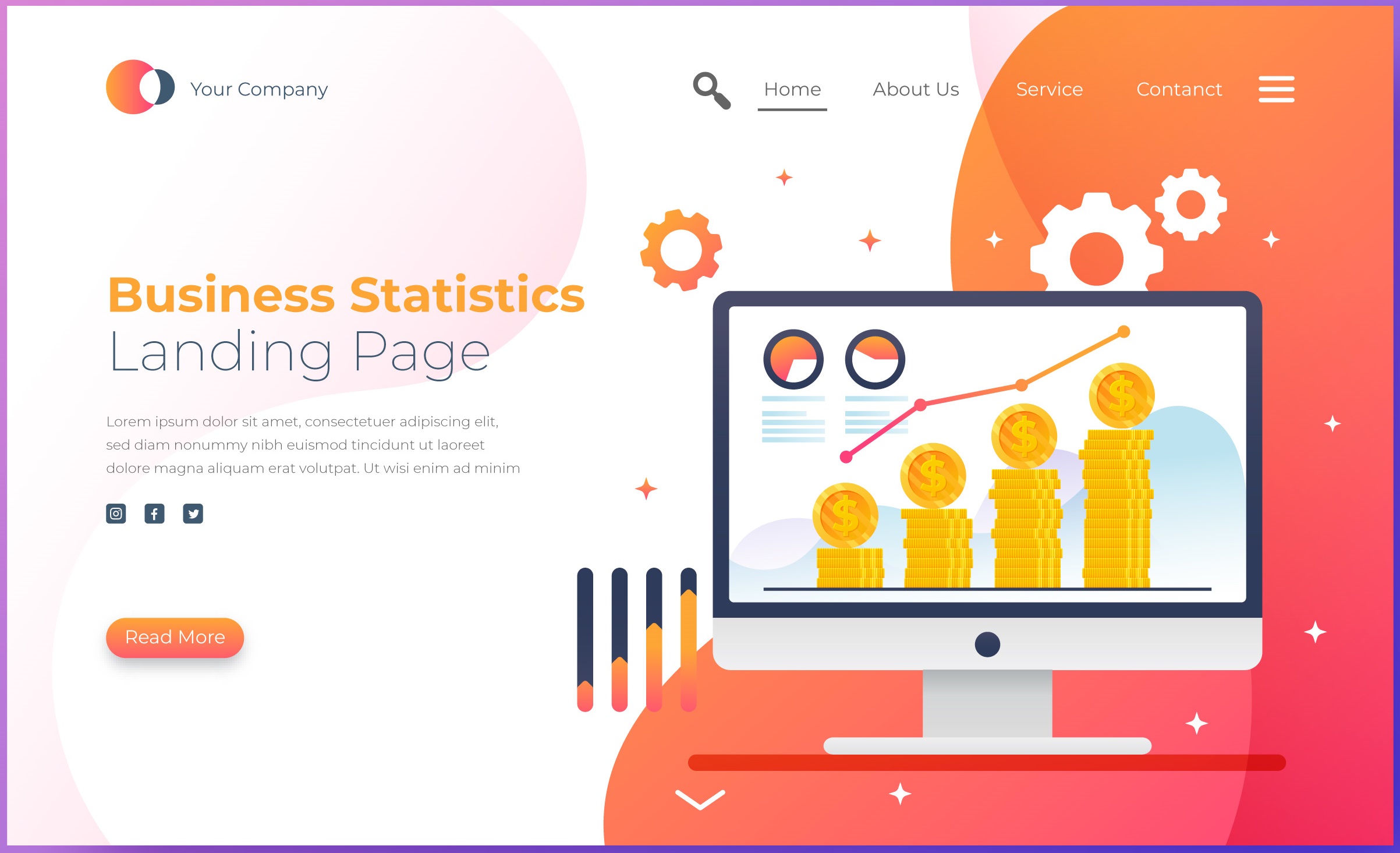
An optimized landing page plays a crucial role in turning visitors into leads or customers. To boost conversion rates, key strategies like having a clear goal, persuasive copy, eye-catching visuals, and strong social proof are essential. This guide walks you through the essential steps to build a high-converting landing page, with each element fine-tuned for maximum engagement. Whether you're running SEO Services or PPC campaigns or promoting a product, these best practices will help you drive better results and maximize your marketing ROI.
Core Insights:
A successful landing page focuses on a single, clear goal, with every element—copy, visuals, and CTA—working together to support it.
Use benefit-driven headlines and strong, action-oriented CTAs to encourage visitors to take the next step.
Incorporate high-quality visuals, explainer videos, testimonials, and trust signals to build credibility and boost conversions.
With mobile users making up the majority of traffic, responsive design and fast loading times are essential to reduce bounce rates.
Regular A/B testing of elements like headlines, CTAs, and layout helps identify what works best and supports ongoing optimization.
Imagine this: you've driven thousands of visitors to your campaign's landing page—but only a handful convert. Frustrating, right? According to research, the average landing page conversion rate hovers around 2.35%, while the top 10% of pages convert at a whopping 11.45% or more. So, what sets these high-performing pages apart?
In today’s fast-paced digital world, your landing page can make or break your marketing success. It often determines whether a visitor becomes a loyal customer or simply clicks away. That’s where landing page optimization (LPO) comes into play.
Landing page optimization is the process of improving various elements on your page—like headlines, calls to action, visuals, layout, and user experience—to boost the chances that a visitor will take your desired action, whether it’s signing up, purchasing, or downloading.
A well-optimized landing page can be the key to winning PPC campaigns, promoting eBooks, or launching new products effectively. In this guide, we’ll dive into essential landing page optimization techniques to help you maximize your conversion rates and get the most from your marketing efforts.
A high-converting landing page is strategically designed to guide visitors toward taking a specific action—whether it’s signing up for a webinar, downloading a resource, or making a purchase. These pages eliminate distractions and focus entirely on a single goal, ensuring clarity and purpose.
The most effective landing pages feature clear, persuasive messaging, engaging copy, and a strong call-to-action (CTA) that motivates users to take the next step. Elements like trust signals—such as customer reviews, testimonials, and security badges—along with visually appealing design, enhance credibility and encourage conversions.
Landing page optimization involves fine-tuning every element—from headlines and visuals to form fields and CTAs—to maximize user engagement. An optimized landing page not only attracts traffic but also converts visitors into loyal customers.
Before you begin optimizing, it's important to identify the type of landing page that best supports your objectives:
Lead Capture Pages: These are designed to collect user information in exchange for something valuable, like a free report or discount code.
Click-Through Pages: Common in the best PPC services, these pages encourage users to click through to another destination, such as a product page.
Sales Pages: Focused on driving immediate purchases, these pages highlight key benefits, testimonials, and urgency.
Event Registration Pages: Aimed at encouraging sign-ups for webinars, live events, or workshops.
Selecting the right landing page type ensures your optimization efforts align with your marketing goals, leading to the desired results.
Designing a high-converting landing page goes beyond just a visually attractive design—it’s about strategically optimizing every element to guide visitors toward taking action. Whether the goal is to sign up for a free trial, download a resource, or make a purchase, the key attributes of an effective landing page are: minimizing friction, building trust, and aligning every element with your desired outcome.
Let’s break down the most important landing page optimization strategies to help you turn visitors into paying customers.
Step 1: Define Your Goal
A successful landing page has one clear and specific objective. Trying to accomplish multiple goals on the same page is a common mistake. For instance, a lead generation page should only focus on collecting user information, not also trying to sell a product.
Right: Get users to download a free e-book.
Wrong: Encourage users to download an e-book, subscribe to a newsletter, and purchase a product.
By defining one clear goal, you can optimize the entire page—from the headline to the CTA—to steer visitors towards that goal.
Step 2: Understand Your Audience
Knowing your audience is crucial for landing page optimization. Conduct thorough research using surveys, analytics, and heat maps to understand user pain points and preferences. When your landing page speaks directly to your audience’s needs, conversions will increase.
How to Research Your Audience:
Tools like Google Analytics can be used to track visitor behavior.
Conduct customer surveys to identify pain points.
Analyze competitor landing pages to see what works.
Use heatmaps (like Hotjar or Crazy Egg) to understand how users interact with your page.
Understanding your audience enables you to craft messages that resonate, leading to higher engagement and better conversion rates.
Step 3: Craft a Compelling Headline
Your headline is the first thing visitors will read, so it must be clear, concise, and benefit-driven.
Elements of a Great Headline:
Keep it simple and clear so your message is easy to understand.
Highlight the benefits to show users what’s in it for them.
Emotionally Engaging: Tap into the visitor's pain points or desires.
Examples of Effective Headlines:
“Increase Your Sales by 300% with Our Proven Marketing Tactics”
“Get a Free SEO Audit and Improve Your Website’s Ranking”
“Double Your Leads in 30 Days with a Free Trial!”
Step 4: Write Persuasive Copy
A high-converting landing page uses a simple structure for its copy:
Attention-grabbing headline
Clear value proposition
List of benefits
Strong call-to-action (CTA)
Copywriting Best Practices:
Use short paragraphs and get to the point.
Break up content with bullet points for easy scanning.
Address potential objections proactively.
Use action-oriented words like “Instant,” “Proven,” and “Guaranteed.”
Example:
Instead of “Sign up now,” use “Get Your Free Guide Instantly.”
Rather than “Buy our software,” say “Save 10 Hours a Week with Our Time-Saving Tool.”
Step 5: Use High-Quality Visuals
Images, videos, and graphics are powerful tools to engage visitors. Research shows that landing pages with visuals perform better than text-only pages.
Best Practices:
Use high-quality product images.
Include customer testimonial videos.
Utilize explainer videos to simplify complex products.
Ensure there’s contrast and white space to make visuals stand out.
Step 6: Implement Strong CTAs
Your CTA (Call-to-Action) should be action-oriented, visually striking, and compelling.
Examples of CTAs:
“Start Your Free Trial Now!”
“Get Instant Access—Sign Up Today!”
“Download Your Free Guide—No Strings Attached!”
CTA Best Practices:
Use bold, contrasting colors to make the call-to-action (CTA) visually pop and grab attention.
Position the CTA above the fold so visitors see it immediately.
Ensure the CTA button is large enough to be easily noticed.
Step 7: Optimize for Mobile Devices
With more than 60% of web traffic coming from mobile, it’s crucial that your landing page is mobile-responsive.
Optimization Tips:
Use a mobile-responsive design.
Make buttons large and thumb-friendly.
Test the page on various devices and browsers.
Consider using AMP (Accelerated Mobile Pages) for faster mobile load times.
Step 8: Ensure Fast Load Times
Slow loading times can increase bounce rates. Use tools like Google PageSpeed Insights to assess your page’s speed and identify areas for improvement.
Optimization Techniques:
Compress images to reduce load time.
Minimize CSS and JavaScript files.
Choose a reliable hosting provider.
Enable browser caching to improve load times for returning visitors.
Step 9: Leverage Social Proof
Trust-building elements such as customer testimonials, reviews, and case studies help increase conversions.
Types of Social Proof:
Customer testimonials
Case studies
Trust badges (e.g., SSL secure, money-back guarantee)
User-generated content (UGC)
Example:
"Trusted by 5,000+ marketers to turn clicks into conversions."
Step 10: A/B Test Your Page
A/B testing is crucial to understand what works best for your audience. Use tools like Google Optimize or Optimizely to test variations of headlines, CTAs, and page layouts.
Ideas for A/B Testing:
Test different CTA button colors.
Compare long-form versus short-copy formats.
Experiment with various headline styles.
Test different image placements to see what drives better engagement.
A strategic approach is essential for creating a landing page that drives high conversions. By implementing these landing page optimization best practices, you can significantly increase conversions and maximize your marketing ROI. Start applying these techniques today and track your progress using analytics tools.
Looking to take your landing page performance to the next level? Our top SEO Company in Delhi or PPC advertising and conversion rate optimization services can help you achieve even better results. Get in touch with us today!
SEO Expert
As a seasoned SEO expert with a deep understanding of search engine algorithms, keyword optimization, and digital marketing strategies. With years of experience, I specialize in driving organic traffic, enhancing website rankings, and implementing data-driven SEO solutions to boost online visibility and business growth.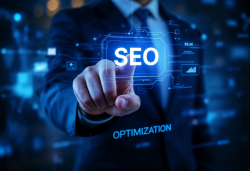 Does Google Penalize AI Content? The Truth About AI and SEO in 2025
Does Google Penalize AI Content? The Truth About AI and SEO in 2025
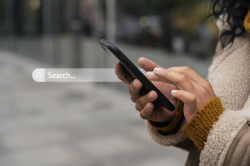 People Also Search For (PASF): Meaning and Its Impact on SEO
People Also Search For (PASF): Meaning and Its Impact on SEO
 Why Your Business Needs an SEO Company for Digital Success
Why Your Business Needs an SEO Company for Digital Success
 How to Choose The Best SEO Company in Delhi
How to Choose The Best SEO Company in Delhi
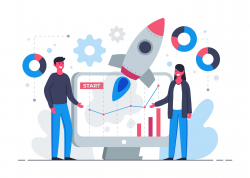 Why Your Business Needs Professional PPC Management to Maximize ROI?
Why Your Business Needs Professional PPC Management to Maximize ROI?
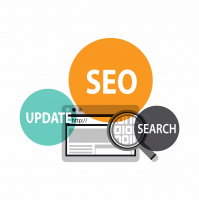 The August 2024 Core Google Update: What You Need to Know?
The August 2024 Core Google Update: What You Need to Know?
 The AI Impact on SEO: Shaping the Future of Search Strategy
The AI Impact on SEO: Shaping the Future of Search Strategy
 Effective Ways to Recover from Declining Google Ads Performance
Effective Ways to Recover from Declining Google Ads Performance
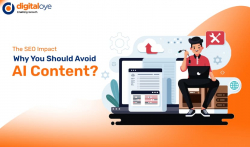 The SEO Impact: Why You Should Avoid AI Content?
The SEO Impact: Why You Should Avoid AI Content?
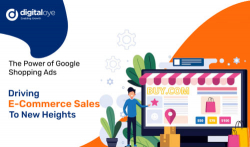 The Power of Google Shopping Ads: Driving E-Commerce Sales to New Heights
The Power of Google Shopping Ads: Driving E-Commerce Sales to New Heights